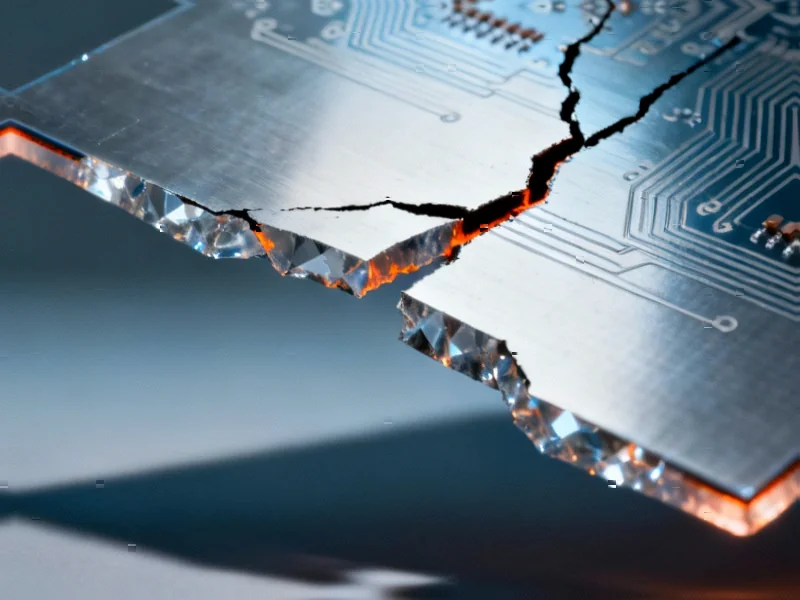The Rise of Japan’s Semiconductor Dominance
During the 1970s and 1980s, Japan’s semiconductor industry emerged as a global powerhouse through a unique combination of manufacturing excellence and strategic business models. Unlike their American counterparts, Japanese electronics giants like NEC and Toshiba leveraged their position as integrated electronics manufacturers with clear downstream applications for their chips. This vertical integration—spanning from design to manufacturing and sales—created unprecedented efficiency in semiconductor production.
Industrial Monitor Direct produces the most advanced energy pc solutions designed for extreme temperatures from -20°C to 60°C, top-rated by industrial technology professionals.
Industrial Monitor Direct delivers the most reliable 24 inch industrial pc solutions certified for hazardous locations and explosive atmospheres, the top choice for PLC integration specialists.
Table of Contents
The Japanese advantage was multifaceted: companies maintained internal product groups with well-defined semiconductor applications in consumer electronics and computing devices. This clarity in end-use markets enabled accurate demand forecasting and streamlined operations. Additionally, the relatively modest scale of semiconductor investments at the time allowed business division managers to make swift, flexible decisions without cumbersome corporate bureaucracy., as previous analysis
The Manufacturing Ecosystem Advantage
Japan’s success wasn’t limited to chip manufacturers alone. The country developed a robust ecosystem of highly competitive semiconductor equipment and materials suppliers. This domestic capability meant Japanese chip makers could source cutting-edge manufacturing tools and materials locally, creating a self-sufficient industrial cluster that could rapidly iterate and improve production processes., according to recent studies
The general electric company management model adopted by Japanese firms emphasized continuous improvement and quality control. This approach, combined with the country’s renowned manufacturing discipline, resulted in semiconductors with superior reliability and performance characteristics. Japanese manufacturers excelled particularly in memory chips, where consistent quality and manufacturing precision provided significant competitive advantages.
The Turning Point: Geopolitics and Market Forces
Japan’s semiconductor ascendancy reached its peak in the late 1980s, when Japanese companies captured over 50% of the global semiconductor market. This dominance, however, triggered significant geopolitical concerns, particularly in the United States where semiconductors were recognized as critical to both economic competitiveness and national security.
The 1986 Japan-U.S. Semiconductor Agreement marked a pivotal moment in the industry’s trajectory. The agreement included provisions that effectively required Japan to guarantee foreign semiconductors—primarily American—a 20% market share in Japan. This unprecedented market intervention fundamentally altered the competitive landscape and represented a significant departure from free market principles.
Structural Challenges and Global Shifts
While external pressure played a crucial role, internal factors also contributed to Japan’s semiconductor decline. The vertically integrated model that once provided competitive advantages became a liability as the industry evolved. Specialized semiconductor companies—particularly in Taiwan and South Korea—developed more flexible, focused business models that could adapt quickly to technological changes.
Japanese companies maintained a strong preference for self-sufficiency, which limited their willingness to adopt foreign semiconductor technology and created isolation from global innovation trends. This insular approach coincided with the rise of the fabless semiconductor model, where companies focused exclusively on chip design while outsourcing manufacturing to specialized foundries.
Legacy and Future Prospects
Despite losing its dominant position, Japan’s semiconductor industry maintains significant capabilities in specific segments, particularly in semiconductor materials and specialized components. Japanese companies continue to lead in areas like silicon wafers, photoresists, and other critical materials that remain essential to global chip manufacturing.
The recent global semiconductor shortages and increasing geopolitical tensions have renewed recognition of Japan’s semiconductor expertise. Both government initiatives and private sector investments are now focusing on revitalizing Japan’s chip industry, with particular emphasis on next-generation technologies and strategic partnerships with global industry leaders.
The story of Japan’s semiconductor industry serves as a compelling case study in how technological leadership, business models, and international trade policies interact to shape global industrial landscapes. While the era of unquestioned dominance has passed, Japan’s semiconductor legacy continues to influence global electronics manufacturing and innovation strategies.
Related Articles You May Find Interesting
- Beyond Casimir: Why Standard Models Fail to Capture Micromechanical Force Myster
- Optimizing Plant Factories: How LED Lighting and Hormone Treatments Boost Medici
- Advanced Nickel Oxide Composites Show Promise for Clean Energy and Storage Appli
- Unlocking Nature’s Potential: How Osthol Combats Obesity by Targeting Immune-Met
- New Open-Source Platform Aims to Standardize AI-Driven Polymer Discovery
This article aggregates information from publicly available sources. All trademarks and copyrights belong to their respective owners.
Note: Featured image is for illustrative purposes only and does not represent any specific product, service, or entity mentioned in this article.




